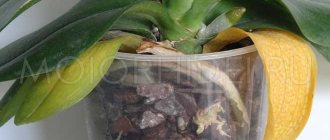Monstera is a beautiful flower native to the tropics, which is why it thrives in humid and hot climates. Some say that this is a terrible plant that harms a person and takes away his energy. Others argue that if you care for the plant, this flower will benefit the health of the owners, because it protects the owners from various poisonings and improves digestion. How dangerous is the plant? Monstera flower: influence on humans is the topic of this article. Let's try to figure it out thoroughly.
Benefits of monstera
Here are the main benefits of this indoor plant:
- Monstera at home saturates the air with oxygen and aerons.
- Absorbs negative impurities contained in the air and improves the microclimate of the room. Also, monstera leaves in the apartment retain dust particles, purifying the air.
- Suppresses the spread and development of viruses, as well as fungi and harmful microorganisms.
- Monstera in the house has the ability to predict the weather. Before the rain, drops of water appear on its petals. Some even call the flower a home weather forecaster.
- Many claim that this culture can save a person from various diseases. This is due to the released phytoncides (biologically active substances).
It is difficult to assess the benefits of the flower on households.
In conditions of poor ecology, these positive properties of monstera are very important. Improving the microclimate helps improve performance.
Growing and care
Where to put the pot with the plant?
It is mistakenly believed that it is impossible to grow monstera in a public place. But placing it in the office, the energy will help increase concentration and improve the thinking process. To increase efficiency, the plant can be placed in conference rooms and offices.
Interesting! In offices where many people work at the same time, it is very useful to place a monstera flower, because it is during the daytime that it will release a large amount of oxygen and also create the necessary level of humidity.
Benefits of Monstera
It is difficult for superstitious people not to pay attention to the mystical statements associated with this flower, but if you try, you can understand that this is just an ornamental plant.
To verify this, there are several facts that the benefits of Monstera are more significant:
- the juice contained in the vine, when used correctly, can act as an antibacterial and anti-inflammatory medicine;
- Monstera in an apartment can cope with formaldehyde vapors emitted by low-quality building materials;
- the wide leaf plate attracts dust, purifying the air;
- Thanks to this same feature, it rids the space of viruses, fungi and bacteria, which reduces the incidence of disease.
- during the daytime, the plant releases a large amount of oxygen, absorbing harmful carbon dioxide;
- Because of its ability to purify the air efficiently, the flower is grown in hospitals, and it is believed that headaches can disappear if you sit next to a tree for 10 minutes.
- monstera is a plant barometer and can predict the weather; the appearance of moisture on the surface of the leaf indicates imminent precipitation;
- taking on the bad energy in the room, it prevents family discord and reduces tension after a quarrel;
- by placing the flower near electrical appliances, such as a refrigerator, TV and especially a microwave oven, the leaves will absorb electromagnetic waves;
- based on the knowledge of Eastern sages, you should know that the plant helps strengthen the nervous system, develop intelligence and orderliness of thought;
- In Asia, monstera is considered a talisman that brings good luck and prolongs life. It is placed at the head of a seriously ill person, and is also planted at the front door to protect the home from evil forces;
- In China, the plant is considered a good gift for any holiday;
- Besides all this, the vine is simply very beautiful and decorative, it can decorate any space.
Possible harm
Monstera - why you can’t keep it at home and its effect on humans
The plant's harm to human health is not scientifically substantiated. Moreover, scientists have conducted research and proven that the plant is harmless if its leaves are not consumed.
There are many rumors and legends surrounding this flower.
Important! If monstera juice gets on the mucous membranes, it will lead to very unpleasant irritation.
Types of Philodendron
The homeland of the plant, which comes from the aroid family, is considered to be the equatorial part of Central and South America. Species diversity is represented by 30 species; only a few of them are adapted for indoor maintenance:
- Monstera tenuis – thin;
- Monstera obliqua – oblique, also unequal-sided;
- Monstera deliciosa – delicacy, also lovely;
- Adanson's Monstera (Monstera adansonii) - pierced or (Monstera pertusa) perforated.
Monstera species and varieties video review:
Currently, selection has given flower growers plants with variegated leaves, but for now, monstera with dark green foliage is more often found in the interior.
Signs associated with the plant
Monstera flower - home care
Here are the most popular negative signs associated with the flower:
- The plant “drives away” the betrothed. Many young ladies are sure that this flower takes happiness away from home and is the cause of their loneliness or problems in relationships.
- Monstera is bad for your career. People believe that it contributes to failure at work and prevents them from achieving their goals.
- Eating the flower can lead to death. This is the most common sign, which is absolutely not confirmed by anything. Monstera petals really shouldn’t be consumed so as not to irritate the mucous membranes, but the leaves definitely won’t lead to the development of diseases or even death.
The frightening appearance of a flower is the main reason for the appearance of negative signs.
But there are also good signs about the plant:
- Serves as a talisman. Many believe in the healing properties of the plant and claim that it promotes longevity and wards off bad luck from people.
- Maintains happiness in the home. In China, monstera is given as a gift at weddings and other family celebrations, as it is believed that it preserves happiness.
- Positive effect on people's concentration. An equally well-known sign is that Monstera develops concentration and composure among family members. This, in turn, improves performance.
As it turns out, there are good and bad signs around the flower. To believe in them or not is the decision of each person.
Tips for proper care
A guest from the tropics loves a humid , warm microclimate, good lighting without direct rays. Capricious - does not like touches and drafts. When the air humidity is high or rainy weather is approaching, droplets of water appear on the leaves - a living barometer in the house.
Watering. Despite the fact that it loves moisture, too much watering is harmful and can lead to rotting of the roots and falling leaves. It is better to periodically spray the leaves and upper roots with moderate watering. By the way, the leaves should be wiped with a soft sponge to remove dust, but only mature ones - young ones should not be used, as they can be damaged.- Soil and replanting. Neutral and universal soils are suitable for monstera. Young plants are transplanted into larger pots every spring, and when they grow too large, some of the soil in the pot is only renewed without replanting.
- Reproduction. Young plants are easily grown in many ways: from seeds, stem cuttings, leaves, apical cuttings, aerial roots.
- Pests and diseases. Susceptible to spider mites and scale insects. With improper care (overdrying or waterlogging), the leaves may turn yellow and black.
Monstera at home
Myths and reality
Monstera deliciosa - poisonous plant or not
There are several myths associated with the flower:
- Poisonous flower.
People believe that monstera poisons the air and therefore should not be kept at home. They believe that just 1 bite of a plant leaf can be fatal.
Scientists have indeed established that Monstera contains needle-like formations. And if there are small children in the apartment, then it is better for the owners to refuse to grow the plant at home. This is discussed in detail below.
- When night falls, the monstera absorbs a lot of oxygen.
Moreover, people believe that the flower pulls this substance out of the air in such quantities that the next morning may not come. Only illiterate people can believe in this myth.
For comparison, there have never been cases where someone died because of another person sleeping next to him, and he also breathes oxygen. In relation to this indoor plant, we can say - yes, at night plants absorb oxygen and release carbon dioxide, and during the day - vice versa. But at the same time, during photosynthesis during the daytime, this culture releases significantly more oxygen than it absorbs at night.
- Energetic vampire.
This is the most common myth about the flower. Many believe that it negatively affects a person’s health and steals his energy. This leads to the destruction of people's personal lives, destinies and careers. Most girls attribute bad luck in love to this flower.
It is impossible to argue with such a myth, because it is based on superstition.
Monstera is an energy vampire.
Important! Superstitious people should refuse to purchase a flower. Many in such cases attribute their failures to him.
Often the opposite effect occurs - after reading “horror stories”, people subconsciously begin to expect negativity, think about bad things, their mood deteriorates, and their heads begin to hurt. All ailments are immediately attributed to the flower.
Dwarf monstera. Types of monstera and their features
Many legends and myths are associated with the monstera. Some associate it with a monster and are afraid to grow it in residential premises, and some believe that the flower got its name from the word “miracle.” In any case, this is a very impressive ornamental plant that fits harmoniously into any interior, adding notes of freshness, luxury and style.
History of discovery
As you know, Europeans discovered America at the end of the 15th century, then for everyone it was known as a mysterious land with dense, impassable jungles full of secrets and mysteries. For many centuries, in the countries of the Old World, there were legends about terrible and gigantic monster trees growing in the forests of South America. Wanderers said that after the attack of such monsters, only one skeleton remained of a person, literally pierced through by numerous shoots hanging from the long trunk of this tree.
Of course, these are just fairy tales, and the colors here are fairly condensed - but there really were grounds for such legends. Scientists believe that in this case we were talking about a wild monstera, and the monstrous tentacles are nothing more than its aerial roots. Hanging, they may well grow through the skeletons of travelers lost in the tropical forest, and the rich imagination of eyewitnesses has already painted the most terrible pictures of the death of the unfortunate man. It was these myths and legends that became the reason why the plant got its name, because translated from Latin monstrum is a monster.
Is the flower poisonous?
Beginning flower lovers are interested in whether Monstera is poisonous or not? It is often said on the Internet that if animals or people bite off part of it, it will lead to poisoning or even death. Scientists say: the monstera is poisonous, but it certainly will not lead to death.
In Australia and India it is even eaten. People grow Monstera and eat its “berries”. Therefore, you should be sure that the flower is harmless if all conditions for growing and caring for the plant are met.
Comments (4)
masmetall
03.12.2017 at 01:22 |
When we moved to a new apartment, I wanted to plant a lot of flowers. Among the flowers suggested by colleagues was a monstera sprout. While the plant was small, it fit perfectly into the interior, and then I had to part with it. My Monstera has become very big.Answer
Yulia Expert Plodogorod
01/11/2020 at 21:06 |
Hello masmetall! This culture really grows with age. Therefore, it is important to prune the plant in a timely manner.
Formation is required at a young age. Older specimens are pruned to encourage branching. Also, it is important not to forget about sanitation, removing diseased or dried areas.
But pruning still serves only as a temporary measure. In the future, you can propagate an old plant that has lost its decorative properties.
It is not difficult to propagate monstera; you can use almost any part of the plant for this. For example, the apical cutting is best rooted in water. For stem cuttings, a container with light soil is suitable, which is then covered with film or a bag.
Monstera is also propagated using leaves. But, this option is used when there are simply no other parts of the plant for propagation. The fact is that when using a sheet there is a high risk of rotting. You need to add activated carbon or aspirin to the water.
If the flower has apical layers, you need to increase the humidity around the formed roots. When the roots grow, the young specimen must be separated with a knife, treating the wounds with cinnamon.
Answer
Lera
03/04/2020 at 08:50 |
Monstera takes up too much space at home, so it is most often used in offices, foyers, and on staircases of administrative buildings. The flower is unpretentious, the main thing is not to forget to water it.
Answer
Yulia Expert Plodogorod
03/05/2020 at 01:18 |
Hello Lera! You are right, such large and decorative plants are often used to decorate various rooms. Although monstera can be called an unpretentious crop, it is important to follow other rules of care other than watering, otherwise the flower will lose its decorative effect. Shoots may turn yellow, stretch or dry out.
Monstera requires good lighting. Therefore, placing the plant in a room without windows or far from them can negatively affect its development. But you shouldn’t place the flower on the south side either, as burns may appear on the crown. Such a culture has a negative attitude towards rearrangements, so it is better to choose the location carefully from the very beginning.
The plant must be protected from drafts, especially on autumn and winter days. The temperature at this time should not be lower than 14-15 degrees. Optimal - 18. The rest of the time, normal room temperature within 20-26 degrees is suitable.
You really shouldn’t forget to water the crop. During the period of active growth, moistening should be done quite often, as soon as the earthen ball dries out. Stagnation of moisture should also not be allowed. Excessive watering is indicated by dark spots on the foliage and rotting roots. When there is not enough water, the leaves begin to dry out.
Monstera responds positively to spraying. Fertilization is recommended only when milking mature plants.
Answer
Monstera: is it possible to keep a flower at home?
In many ways, people's fears are caused by the rather frightening appearance of the plant (large dissected leaves resemble roots sticking out to the sides) and numerous myths. And its name clearly does not inspire confidence in people.
In daylight, Monstera looks harmonious in any home interior.
On the other hand, quite a lot of flower lovers keep the plant at home without even knowing about its bad reputation. In China, as mentioned above, they even give monstera to newlyweds. True, they probably call it differently.
Important! One thing you really can’t argue with is that there are needle-like formations inside the flower. If desired, they can be seen under a microscope. They can irritate the mucous membranes of living organisms and cause allergies.
If there are animals and/or a small child in the room, parents should consider whether it is possible to grow a monstera at home.
Is it worth starting at home or not, is there any benefit from the flower?
Superstitions give the plant magical properties, and many bad omens are associated with it.
If you are inclined to believe in them, you should not have a monstera at home. It reacts sensitively to the emotional state of its owners and, in the presence of negativity, will not grow, even if you create conditions suitable for the flower. People who have monstera at home are ready to confirm that all superstitions associated with it are just fiction. On the contrary, the plant cleanses the air well from harmful impurities , so it is worth having for allergy sufferers and asthmatics. In addition, Monstera works as a natural humidifier, as its massive leaves release moisture.
If you want to improve the climate at home, Monstera will be an excellent helper. But it is especially loved for its exotic appearance, which is why interior designers often use the plant to decorate rooms. The flower fits perfectly into almost all modern interior styles, so even if you want to renovate, the plant will still look great in the updated room.
What happens when placing Monstera in the bedroom?
As was said, scientists have proven the plant’s harmlessness, so it can be placed in the bedroom (as well as in any other room of the house). Bad superstitions are not supported by anything. And even the loudest myth that the monstera is an energy vampire is also unsubstantiated. This has never happened before, and it won’t happen in the future either.
But if from a biological point of view the flower is harmless, then with signs everything is extremely ambiguous.
It is impossible to answer what will happen when placing a monstera in the bedroom. Positive and negative signs are associated with the flower. Believing in them or not is everyone’s personal choice. One thing worth noting is that if people are constantly fixated on negative thoughts and failures, then they will blame the monstera for their misfortunes. On the other hand, many attribute positive changes in life to the influence of monstera.
If a person is shy, you should not place the monstera in the bedroom. People are afraid to wake up at night and see a huge shadow with large dissected leaves that resemble roots.
This cannot be denied; in the dark she looks terrifying.
Signs and superstitions
Monstera is often called a “crybaby” or a barometer. Before rain, air humidity rises and droplets of juice appear on the leaves of the vine - in the tropics this serves as a reliable sign of imminent precipitation.
Sometimes it is called a “vampire”, citing its ability to take energy: first the plant collects all the negativity, and then gets to the positive vibrations. However, it does not “drink”, but balances: it removes excess, normalizes, and brings it to an optimal state.
According to popular superstition, the monstera drives suitors away from girls and, as a result, its owner risks being left alone. There is no justification for this sign, but based on logic, it can be assumed that men with negative energy and dishonest intentions dare. A brave, sincere and loving person is unlikely to change plans because of a plant.
Its gloomy image was created by legends of travelers who found human skeletons in its roots. From the outside it seemed as if the monster had strangled the unfortunate man. However, the solution turned out to be simple: people in the jungle died from various causes (disease, thirst, wild animals, poisoned arrows, etc.), and the vine simply wrapped itself around them with stems and aerial roots.
Where can you keep a flower?
There are other places in the house to place monstera. This vine-like flower reaches several meters in length, so you need to give it a lot of space.
Often a flower is placed at the front door. Many believe that this is how he maintains happiness.
You can also place it in the living room or kitchen. The most important thing is to protect children and animals from consuming flower leaves in order to avoid irritation and allergic reactions.
If the child in the house is very small, the plant should be fenced. You can be sure that it will not indirectly harm anything living in the house. That's what science says.
For reference: monstera propagation occurs by cuttings or cutting off leaves; if desired, you can easily increase the number of bushes.
Where to put it in the apartment?
According to Feng Shui, monstera has a beneficial effect on the energy of space and helps to find peace. You can place a pot with a plant in the kitchen, hallway, living room or hallway. These rooms are best suited if you want to put your thoughts in order and achieve a state of harmony.
If you have an office at home, it will also be a suitable place for a monstera. While there, the flower will help you develop business skills and climb the career ladder. also recommended to keep the monstera in offices and near any workplace. This is an excellent plant for those who want to build a successful career and achieve financial well-being.
Perhaps the only place where you can’t put a monstera is the bedroom. It is believed that it cools marital relationships.
This is just a belief, but it’s not worth the risk when there are plenty of other suitable places to place the flower.
Impact on humans
How does the monstera flower affect a person? It is imperative to highlight the enrichment of air with useful substances and improvement of the microclimate. Now this is very important, since the air in cities is highly polluted. In addition, the plant absorbs harmful impurities and collects dust that could accumulate in the air.
Monstera also prevents the development of fungi and various viruses due to its properties. In addition, the flower releases substances that protect people from various diseases.
At the same time, folk signs and superstitions endow the monstera with negative properties. Whether or not to pay attention to such things is up to everyone to decide for themselves.
If a lover of indoor plants likes the appearance of a flower, and superstitions do not scare you, it may be worth buying it for your home. It will greatly benefit the whole family. But the plant has not been proven to have a negative effect, so you should not worry about this.
What does it look like?
Practitioners warn that any indoor plant will be harmful to physical and mental health if the owner cares for it without desire. So, if gardening does not bring you joy, it is better to donate the flower.
This amazing tropical vine has large green leaves covered with large slits. Thanks to its frightening appearance and decent dimensions, the evergreen plant has gained notoriety. The monstera trunk reaches 2-3 m, and therefore requires additional support when grown in an apartment. The vine has long rhizomes that peek out from the ground. Gardeners do not advise trimming them, as this can damage the health of the indoor flower. For each protruding root, it is recommended to create a pot or bag of fresh soil. Monstera produces white, elongated flowers, and with proper care also produces edible fruits, which are used for medicinal purposes in South America.
Plant pests
- Mealybug. Signs of damage: young foliage and shoots of the plant. To combat the pest, the affected areas are treated by wiping with a soap solution, then sprayed with a 0.15% Actellik solution.
- Shield. Signs: the plant becomes covered with small brown plaques, which leads to the leaves drying out and completely falling off. They destroy scale insects in the same way as mealy mites.
- Spider mite. It entangles the foliage of the plant with a thin web, which leads to its lethargy and lifelessness. In this case, treating the leaves with soapy water and specialized store-bought products can help. Red spider mite infestations appear as many dark spots on the underside (hidden) side of the leaf blade.
- Thrips. Signs: the outer side of the leaves is densely covered with light dots, while the pests themselves are located on the inside. Spraying with a solution of a suitable insecticide helps get rid of insects.
Growing errors: Monstera leaf diseases
What are the signs of improper monstera care?
- Has the plant stopped producing new leaves for a long time? The existing support should be replaced with a higher and stronger one.
- Is the plant's young foliage small, pale, and unslitted? This means that the monstera suffers from a lack of light.
- Is the foliage turning brown and drying out? The plant suffers from low indoor humidity and high temperature.
- Drops of moisture appear on the leaves, then they wither? This happens due to excessive watering and excess humidity. If measures are not taken, the shoots will also wither and begin to rot.
What conclusions can be drawn? If you follow all the available recommendations and take proper care of your monstera at home, everything will be just fine.











